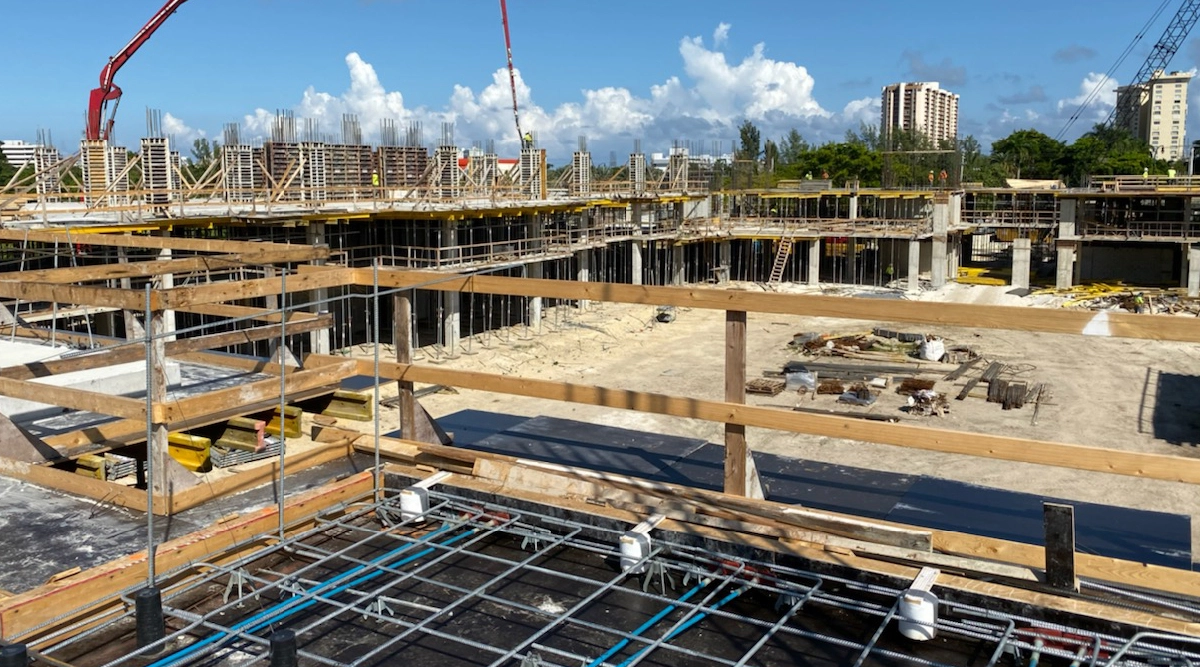Finding a vacant plot of land in a developed market is difficult, but if it’s available, that opportunity should be explored.
Ground-up developments have the potential to produce very high returns for investors. However, there can also be a considerable amount of risk involved.
A significant amount of due diligence must be undertaken prior to selecting the right vacant lot to hedge the risks of constructing a new building.
As with buying and renovating any property, the focus should always be on whether there are strong market fundamentals and good local indications of growth. Here’s why:
Strong Fundamentals
“If you build it, [they] will come,” is a great movie expression, but it does not apply to all ground-up real estate developments.
Tenants won’t appear just because a shiny new building was constructed in any particular neighborhood. When building a ground-up property, it all comes down to aligning demand with supply, just as with any other real estate investment.
Therefore, one needs to understand a location’s trends and fundamentals and match their business plan to it. This understanding of the local market commences at the inception of the project and continuously adapts throughout the investment. However, early on, a developer will spend significant time and resources analyzing market data, which includes local demographics, rents from comparable properties, surrounding amenities, and other critical information of about the area. This information is then utilized in all aspects of the investment going forward, from the design of the building itself to the underwriting of the investment, and even during the operation of the completed project. A sponsor’s knowledge of the specific market, which typically comes from experience, is also imperative in understanding the community’s needs.
In areas where the population and jobs are experiencing expansion, the opportunity could be ripe for new housing to serve the incoming residents. It is important, however, to understand the needs of this growing population. Are they looking for luxury housing, affordable housing or a combination of both? Are they looking to purchase homes or rent? How far is the population willing to travel for work? Once the sponsor identifies the demand, which often requires having local expertise, they can identify whether there is a shortage or oversupply to meet this demand.
Take for example, the Miami, Fla. market. While the Miami metro area has experienced robust growth, and continues to expand, many tenants have been priced out of Downtown Miami, and have expanded their search for apartments to the suburbs, such as North Miami, which is only a 20 – 30-minute commute to Downtown. Additionally, rents for luxury units in these suburbs are often markedly cheaper than in Downtown. Rents in North Miami are 20 – 30% cheaper than comparable units in Downtown Miami, according to 2019 rent data from CoStar.
Yet, there is a lack of supply in North Miami, where more than 55% of residents are renters, according to the U.S. Census Bureau, and there are few large vacant lots available. This makes North Miami, and markets with similar housing shortages, a potentially attractive area for a ground-up development opportunity.
Local Indicators
A neighborhood with a grocery store as its only retail option may not be very notable or desirable. But if a coffee shop, pharmacy, bakery, and various restaurants and bars start popping up, it could enliven the area and that momentum can quickly propel the neighborhood into a desirable place to live.
Local Indicators
A neighborhood with a grocery store as its only retail option may not be very notable or desirable. But if a coffee shop, pharmacy, bakery, and various restaurants and bars start popping up, it could enliven the area and that momentum can quickly propel the neighborhood into a desirable place to live.
Similarly, just one development in an area isn’t typically noteworthy, but a group of new investments may be indicative of a neighborhood’s potential and can snowball, making the area a great place to live.

This vibrancy and growth typically leads to higher demand and increased rents, which ultimately increases real estate values.
Examples of good local indicators can include the opening of new high-end retailers, such as Whole Foods Market, and other investments being made in the area.
This type of growth can propel an area’s increase in population, which can lead to higher rents, low vacancy and higher property values.
The Cherry on Top:
New construction presents a wide range of design opportunities, and today’s building standards and codes typically result in buildings better able to withstand the elements than older properties.
For example, Florida is no stranger to some extreme weather. However, current Florida Building Code regulations require that buildings in Miami-Dade County, for example, are constructed to withstand wind speeds of at least 165 miles per hour, which are characteristics of Category 5 hurricanes. Older buildings were not built to the same standards, and while retrofitting is possible in some cases, there is an advantage to being able to implement current building technologies to counter weather storms that may strike the region, protecting residents and investors alike.
Conclusion
Investment in ground-up construction has the potential to generate high returns. However, like all real estate investments, these projects have a certain level of risk. Real estate markets will always go up and down, but there is both opportunity and risk at all stages of a market cycle. Investors should question whether a deal’s market fundamentals appear strong and if the business plan is sound. If so, and with the right team in place, a project has the potential to succeed even during a downturn.

